Top 10: Video Chat software for business
Updated: July 31, 2023
Video chat software for business is a specialized tool that facilitates real-time, face-to-face communication between team members, clients, and partners, regardless of their physical location. These software solutions offer features such as high-definition video and audio quality, screen sharing, and instant messaging, enabling seamless collaboration and virtual meetings. Video chat software enhances team communication, making it easier to discuss projects, share ideas, and address issues in real-time. It also allows businesses to conduct virtual conferences, webinars, and sales presentations, fostering stronger relationships with clients and stakeholders. With the rise of remote work and global teams, video chat software has become an essential tool for businesses to connect, collaborate, and build meaningful connections in a dynamic and fast-paced work environment.
Some of the most popular video chat software options are listed below.
See also: Top 10 Video Calling apps
See also: Top 10 Video Calling apps
2019. Zoho Assist adds voice and video chat
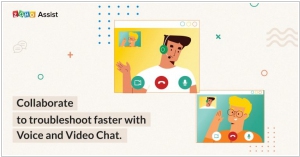
Zoho Assist now offers a comprehensive communication package, incorporating voice and video chat alongside the existing text chat feature. In Zoho Assist, remote support technicians can initiate voice or video chat during their troubleshooting or demo sessions. Thus, voice and video chat provide an additional enhancement to your experience. Juggling phone calls, live chat, and remote sessions during troubleshooting can be a challenging multitasking endeavor for IT technicians. However, Zoho Assist enables you to directly call your customer from the console, eliminating the obstacles associated with switching between applications.
2018. Google starts migrating all G Suite users from Hangouts to Meet
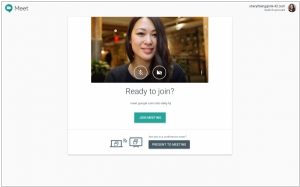
Google has made an announcement regarding the transition of all G Suite users from its Hangouts video chat service to Hangouts Meet, which is a more enterprise-focused version of Hangouts. This migration process is expected to be completed within approximately one month. As a result, all newly created Calendar invitations will now include links to Meet video meetings. It's important to note that previously scheduled meetings will remain unaffected by this transition, as emphasized by Google. The company aims to achieve feature parity between Meet and Hangouts, including browser support. Once this is achieved, Meet will become the default option for all users, ensuring a consistent experience for all participants.
2018. Instagram gets video chat
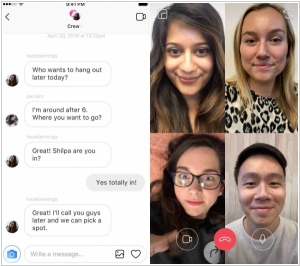
Facebook has revealed that Instagram will soon introduce video chat support, along with a range of other new features. Many Instagram users already utilize the platform's live video feature to engage in conversations with their contacts. The addition of video chat will enhance the existing messaging capabilities of Instagram. Alongside video chats, Instagram will also introduce an enhanced Explore tab, which will prioritize content aligned with the user's interests. It's worth noting that Snapchat recently introduced group video calls, enabling up to 16 participants.
2018. Skype adds new feature for recording video calls

Microsoft has introduced a new feature called "Skype for Content Creators," which enables desktop users to make and record calls using the Skype desktop software. These recorded calls can then be streamed live or imported into other applications for further editing before being published. This feature is particularly beneficial for digital broadcasters, streamers, and vloggers as it eliminates the need for expensive studio equipment when creating videos, podcasts, or live streams. While it is especially useful for recording video chats with remote guests, such as in a weekly call-in show, it can also be utilized for live streaming calls on other platforms like Facebook, Twitter, or YouTube.
2016. HipChat adds group video chat
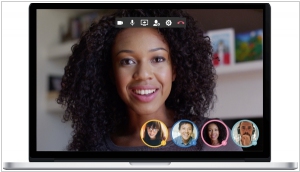
Group chat service for business HipChat (known as Slack's main rival) has recently unveiled an integrated video conferencing system. This new feature enables HipChat users to initiate video chats effortlessly with a single button click, granting them greater control over their preferred participants. Prior to this update, users were limited to video chatting through third-party integrations like BlueJeans, HYFY, and Google Hangouts. These integrations necessitated separate accounts, took longer to initiate, and offered less control over participant visibility. In March, Slack developers also pledged to incorporate video and audio calls into their product.
2015. Facebook Messenger gets free video calls
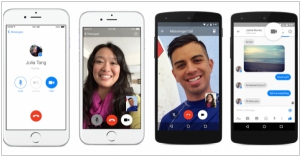
Facebook Messenger has recently introduced free VOIP video calling functionality for iOS and Android users in the United States, Canada, the United Kingdom, and 15 other countries. The aim of this feature is to enable face-to-face connections regardless of the user's location or their mobile network connection. With Messenger, individuals can engage in video chats seamlessly, bridging the gap between a person using a new iPhone with a strong LTE connection in San Francisco and another individual using a low-end Android device with limited 3G coverage in Nigeria. While Facebook initially collaborated with Skype to introduce desktop video calling in 2011, the company eventually developed its own infrastructure for video calls. By expanding this capability to mobile devices, Messenger emerges as a formidable competitor to iOS-exclusive FaceTime, cumbersome Skype, and less widespread Google Hangouts.

